AFTRS's Master of Arts Screen - Documentary: The Application Process
In this article, I go over my experience with the application process for the Master of Arts Screen in Documentary offered by AFTRS.
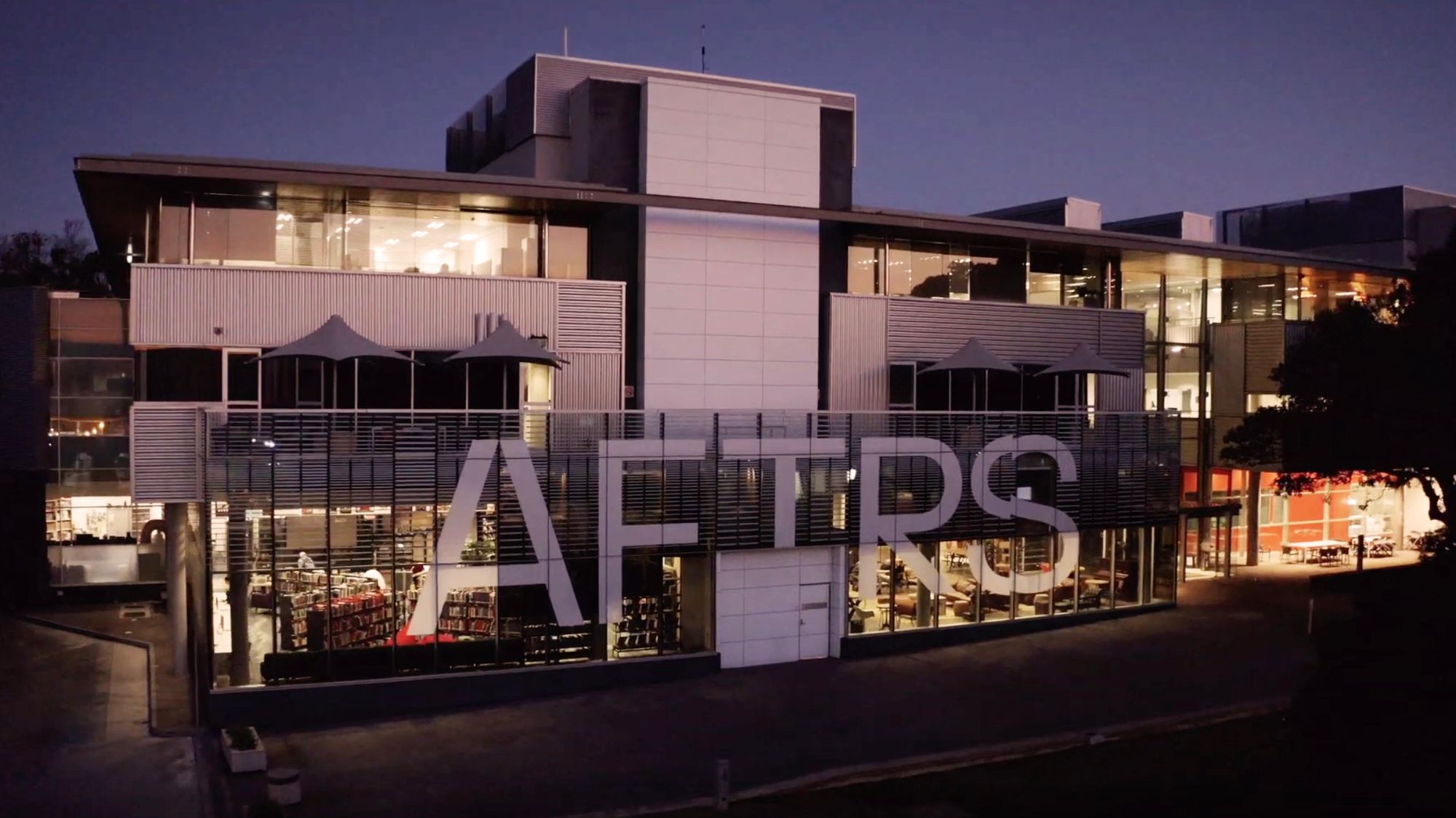
In 2021, I applied to the Master of Arts Screen in Documentary Filmmaking at AFTRS, the Australian Film, Television, and Radio School located in Sydney. In October later that year, I was invited to an interview over Zoom, and by the end of the month I received an offer to start the program in February 2022.
Following this, I initially deferred my offer to 2023, but have since decided that I’ll probably turn down the offer altogether because I don’t want to make the big move back to Australia from the UK, where I’m currently based, at this moment in time.
Nevertheless, I enjoyed the application process, and would like to share my experience with anyone who might be interested in applying to the program. As such, in this article I’ll be going over each component of the application process, and explain how I approached the various tasks.
You can also watch a video version of this article below:
Prerequisites & Selection Criteria
Before I get into the different stages of the application process, I’ll briefly touch on the prerequisites to the course and the selection criteria as outlined on the course webpage. In the first instance, I would definitely recommend thoroughly reading through this webpage, which you can find linked here, and direct any further questions you have to the contact information they have listed there.
Once on the course webpage, you can find more information on the prerequisites and selection criteria by navigating to the section titled “Admission Requirements”. There it says the following:
Applicants to postgraduate programs are required to hold a relevant undergraduate degree at bachelor level, or to have completed equivalent work experience and/or training.
The typical duration of a bachelor degree is 3-4 years, and candidates applying by degree equivalence are required to demonstrate they have achieved corresponding learning outcomes by completing a similar volume of relevant work experience and/or training. If you wish to apply for admission to a postgraduate program by degree equivalence, you will need to submit a Degree Equivalence Form. For more information, please contact the Admissions team at applications@aftrs.edu.au.
I personally have two degrees in Film Studies which, it’s important to note, were both completely theoretical and contained no practical component at all so don’t be deterred from applying if you have a degree that isn’t in practical filmmaking.
However, when I was an undergraduate living in Sydney, I attended several short courses in filmmaking, producing, and screenwriting at AFTRS. I also instigated several of my own filmmaking projects, both fiction and documentary, and interned as a data wrangler on a reality TV show. As such, I was able to develop the skills relevant to my discipline in this way, demonstration of which also happens to be one of the selection criteria for the program.
You can find the selection criteria directly underneath the prerequisites. They are as follows:
- Demonstrated experience or related skills relevant to discipline.
- A distinct creative perspective.
- A proven capacity for leadership and collaboration.
- A willingness and capacity to engage in critical thinking, reflection and research.
The first three will hopefully come across through your audio-visual statement, creative work and personal statement if you have been fostering some kind of creative practice. This can take a range of forms and can involve various mediums aside from film. I was able to easily demonstrate the fourth criterion by referring to the work I had completed during my two degrees in Film Studies, which inevitably involved critical thinking, reflection, and research. If you are applying without an undergraduate degree, you will need to think of other times in your life when you have engaged these skills, and clearly demonstrate this in your personal statement, audio-visual statement, or the creative work submission.
Below the selection criteria, you’ll find a link to an "Application Rubric", which goes into even more detail about what the admissions team are looking for in a candidate. This is an extremely useful document, and you can find a link to it here.
Following this, they ask for three documents:
· A one-page resume demonstrating a list of your achievements, educational qualifications and work experience.
· A certified copy of your highest education level.
· Proof of citizenship or residency in the form of a passport or birth certificate
Once you meet all of these prerequisites, you’ll be in a good position to begin the application itself, which is comprised of three initial tasks and, if shortlisted, an interview and an extra task.
TASK 1: Audio-Visual Creative Statement
The first application task is a 3-minute audio-visual creative statement that presents who you are as a creative practitioner. As per the course webpage, ‘there is no set form here, you can record a piece to camera or make a work that expresses these ideas.’ When working on this task, the course webpage suggests exploring the following questions:
· How would you define your creative voice?
· What kind of stories connect with you and why?
· Do you think stories matter? Why?
· How do you collaborate with other creative practitioners?
My creative statement was a three-minute video essay that was similar in form to the videos that you can find on this website. I wrote a script and recorded myself reading it out. Following this, I placed the audio track over text, photos, and clips from films that complimented what I was talking about. I answered all four of the suggested questions to consider, placing emphasis on how I define my creative voice, my influences, and collaborative process.
In particular, I opened my creative statement with a quote by a filmmaker and academic that I resonate with, and explained its significance in my education as a film scholar. From there, I segued into a brief articulation of my views on the medium of cinema as it relates to the documentary genre, and made references to films, filmmakers, and theorists that have informed both my creative process and scholarly interests. To conclude the creative statement, I provided a brief overview of my approach to collaboration and the benefits it brings to the creative process.
TASK 2: Creative Work Submission
The second task in the application process is a creative work submission. This should demonstrate your best work. The course webpage specifies that you can ‘submit up to 3 (three) examples of your work as a key creative’, and the total running time should be no more than 15 minutes or 30 pages. It also states that ‘these works can include any format: fiction, non-fiction, experimental; film, video, or other digital and online forms; linear or nonlinear; music scores’.
In particular, they advise that your creative submission should effectively demonstrate:
·Your creative intent
·Your technical and/or craft skills related to the discipline you are applying for
You must also submit a portfolio alongside this creative submission, which clearly outlines your role on the work submitted.
For my creative work, I submitted the first 15 minutes of an experimental landscape film I made in 2020 and 2021 called Port Meadow (Zachary Xavier, 2022). The full 30-minute film can be viewed below if you would like to watch it.
In my portfolio, I specified that my submission was a 15-minute extract of a longer work, and divided the remainder of the document into four main sections, namely: my roles on the project together with a synopsis, stills from the film, a director’s statement, and a list of all my credits in other film and television work I had done.
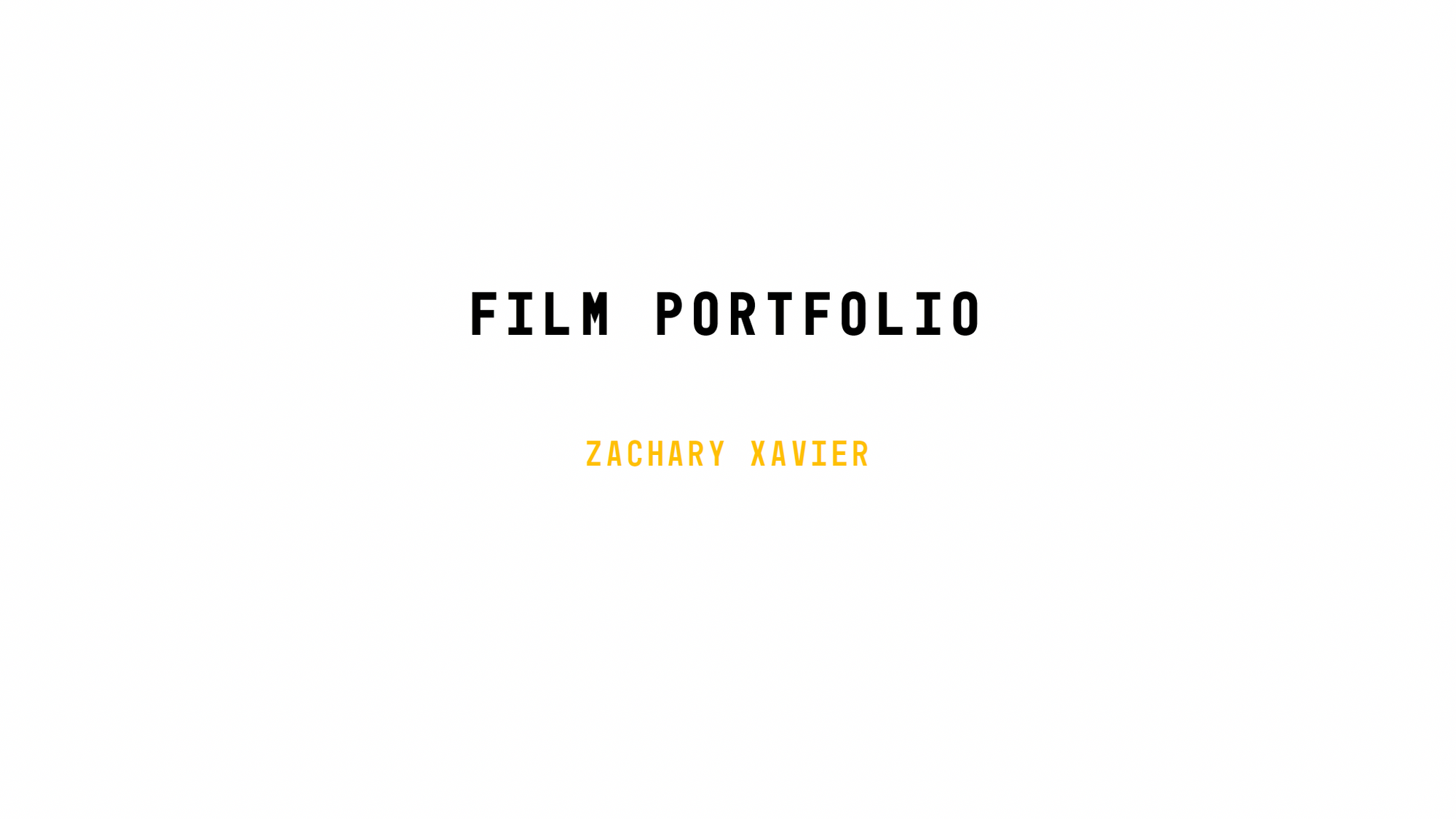
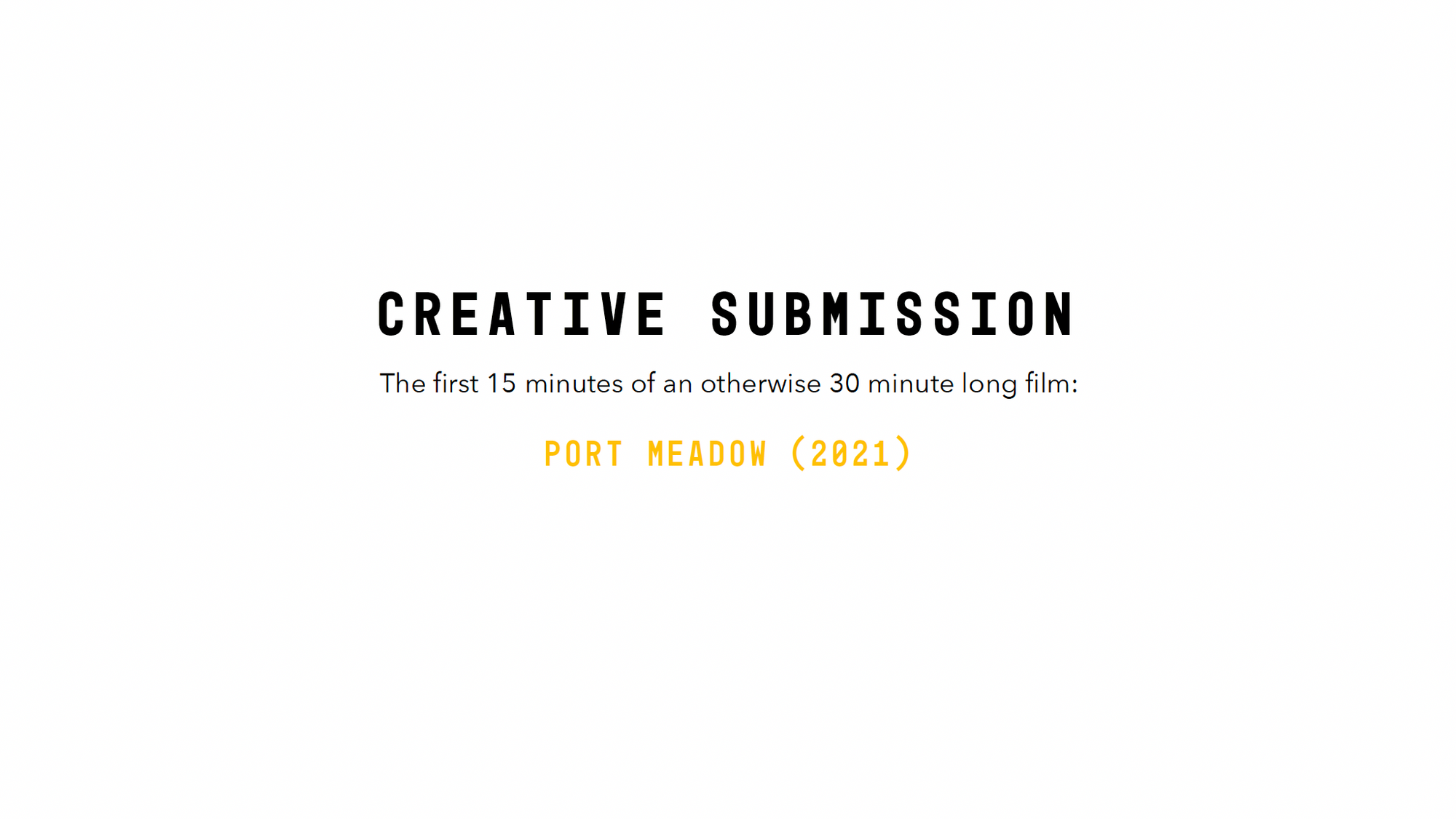
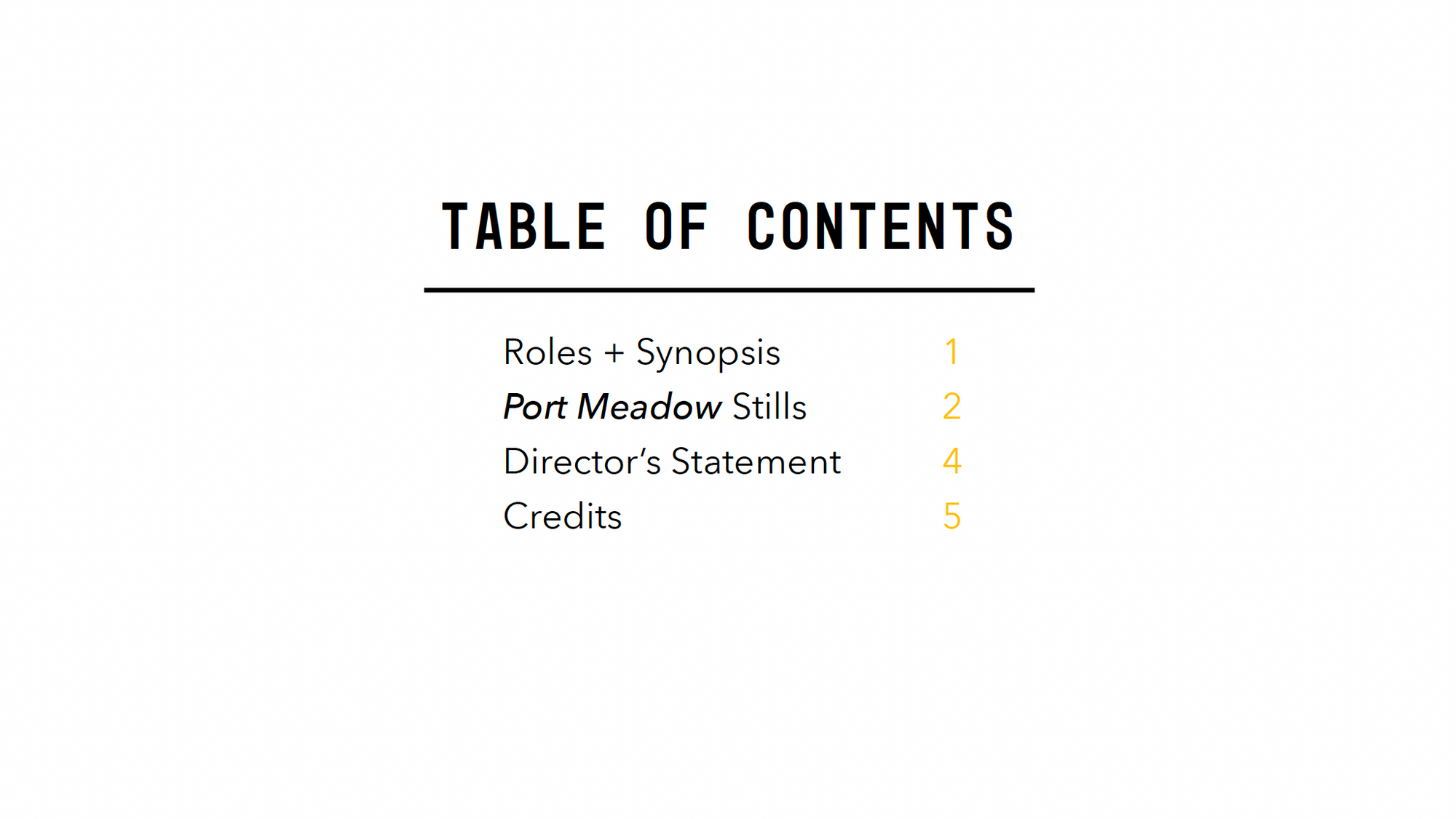
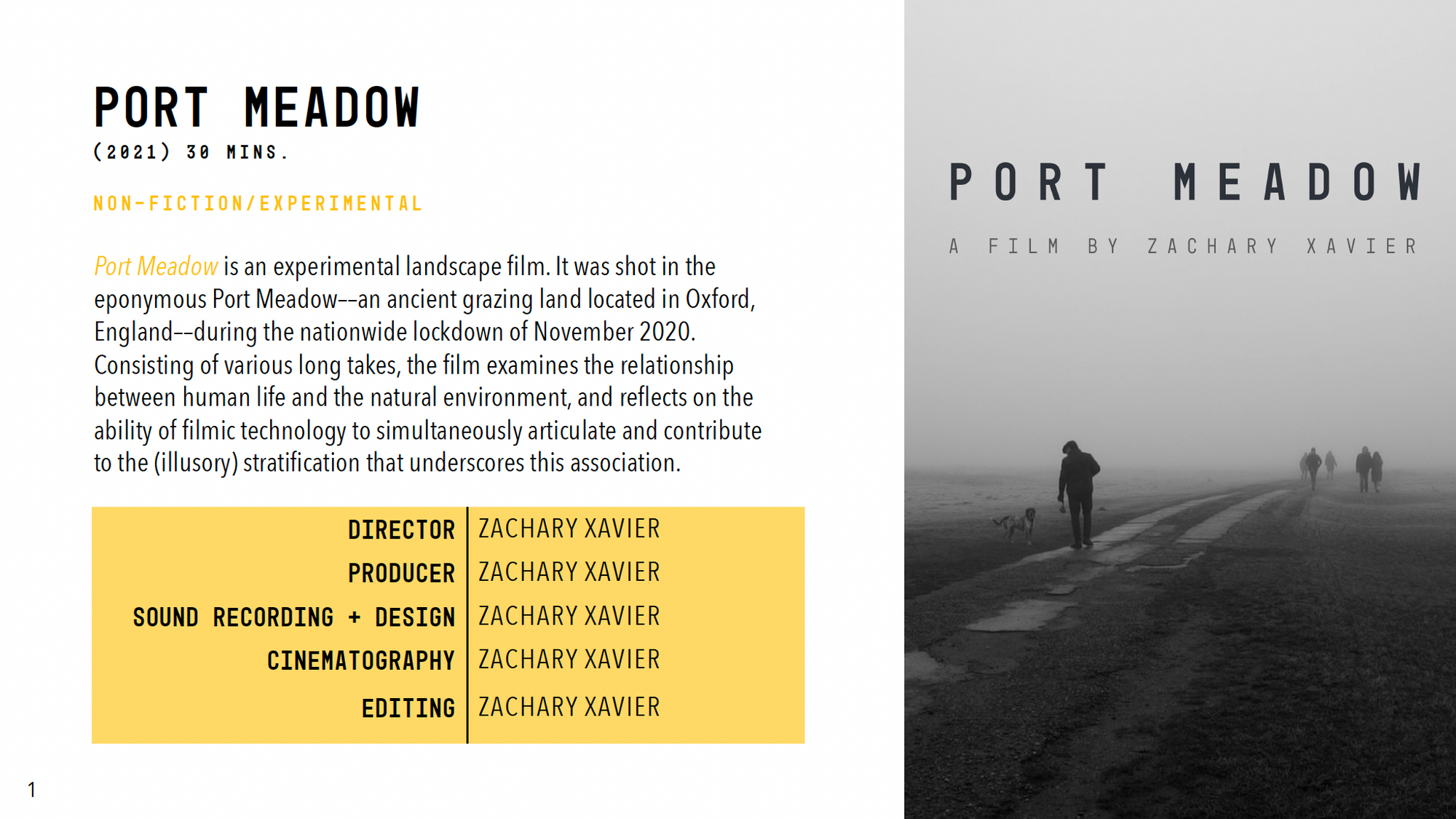
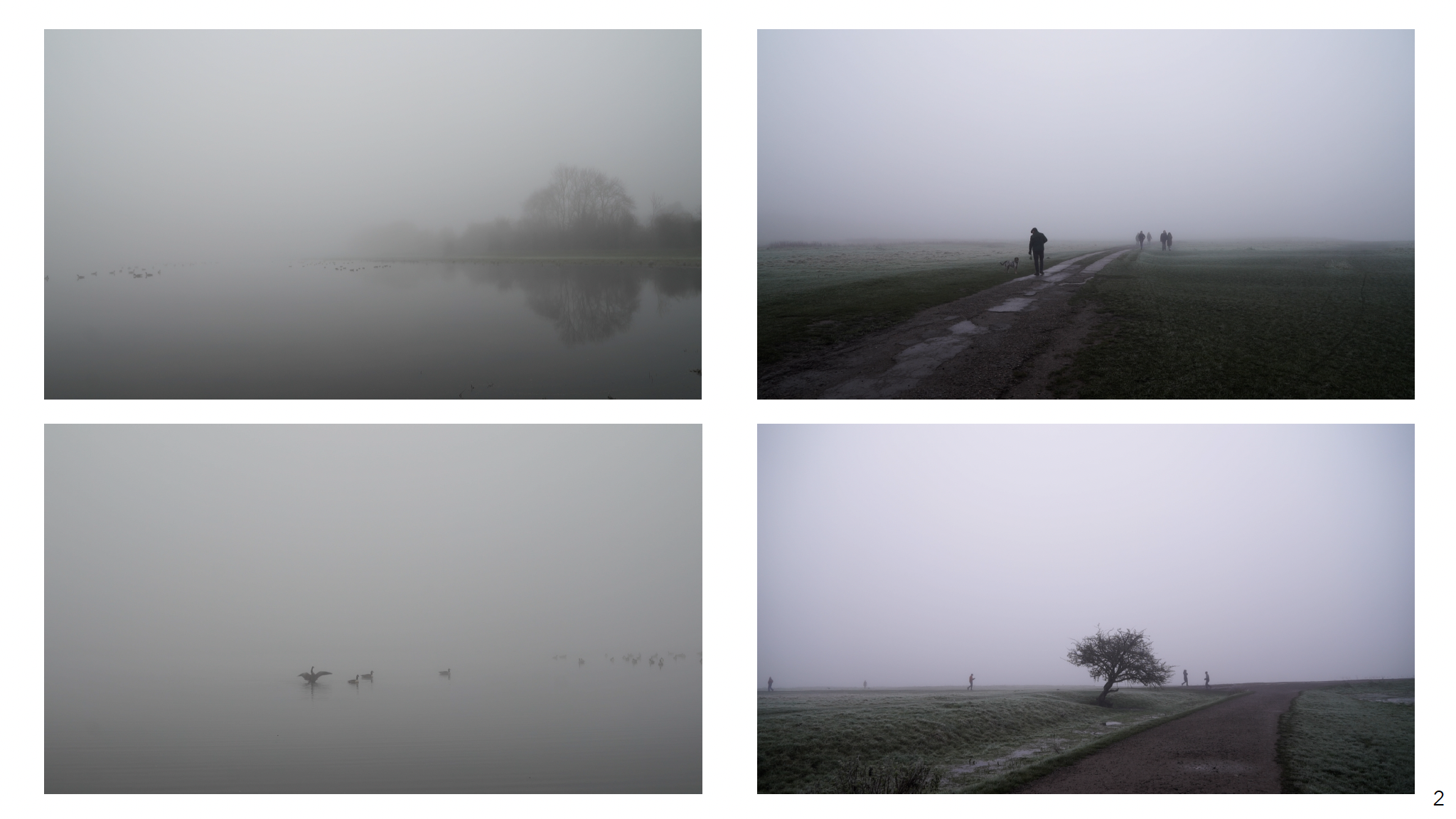
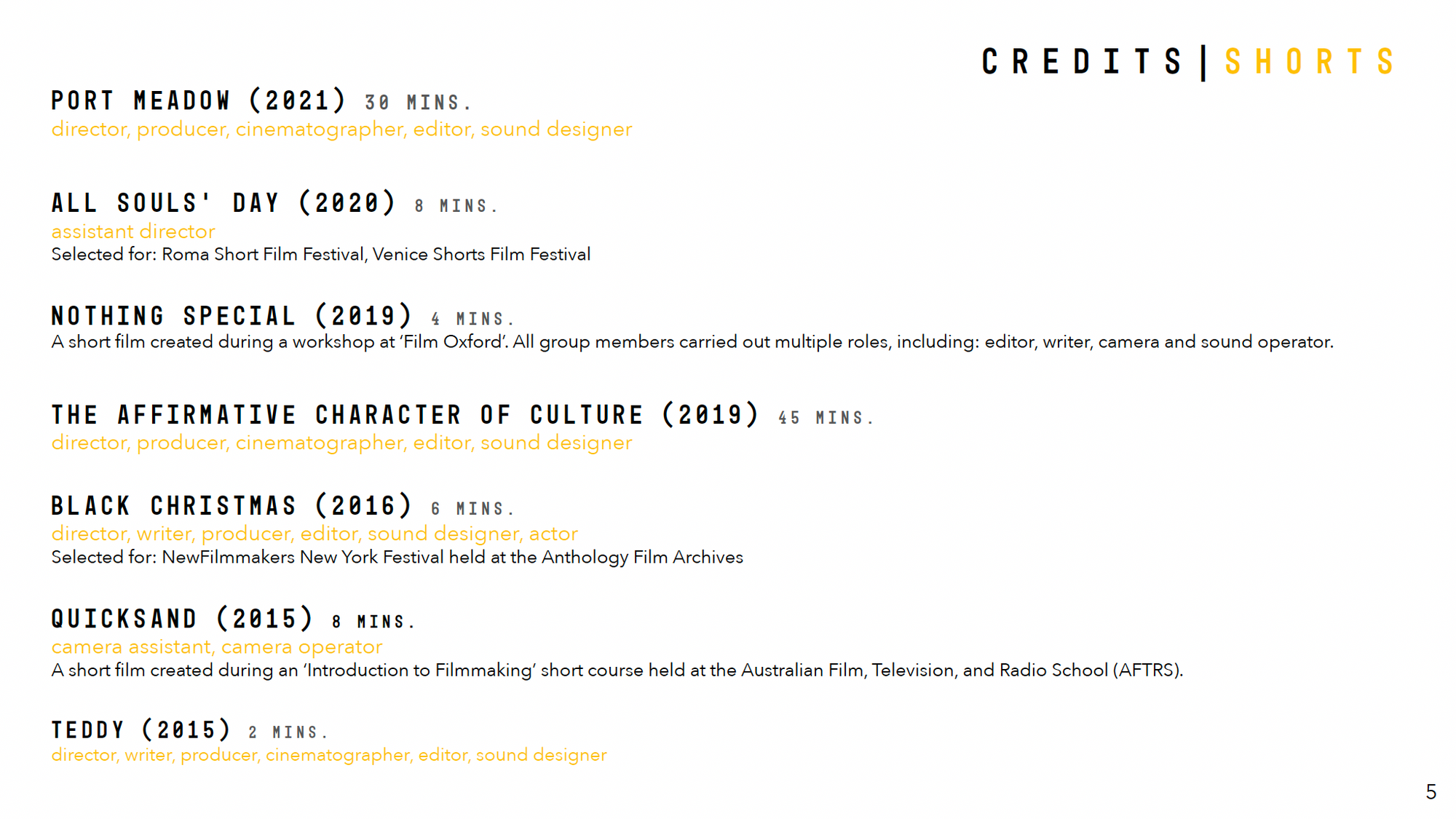
TASK 3: Personal Statement
The final application task is to write a personal statement. On this task, the course webpage instructs that you:
write a one-page outline of your key objectives for studying at AFTRS. You may include information such as your personal history, your goals and ambitions, and where you see yourself at the completion of this program.
When writing my personal statement, I followed these exact guidelines. One page is not a lot of space so I jumped straight into my key objectives for studying the course in my introduction. Following this, I gave a brief overview of my personal background in academia and how my interest in documentary and experimental filmmaking developed alongside my studies. I also touched on relevant filmmaking projects that I was involved in, such as: Port Meadow, the film I used as my creative submission. To conclude my personal statement, I summarised what I was hoping to achieve by the end of the program and my future ambitions following completion of the course.
Interview & Additional Task
After completing all three of these tasks, and gathering all of my supporting documents, I submitted my application in August. By mid-September, I had received news that I had made it to round-two of the application process, which was an interview with the Head of Department, Richard Welch, and two other practitioner assessors. I was also instructed to complete another task to complete for the interview.
This task was a 500-word critical reflection of a documentary of my choice. I was required to articulate the films strengths, weaknesses, and my own personal connection to the films style, subject and themes. I could choose any mode of documentary and any length, whether it be a short, feature, or series.
Please note: I’m not certain if this same task is sent to all shortlisted candidates, or how it differs for other disciplines.
Once I had completed the extra task, I sent it back to the admissions team before my interview, which was held on the 1st of October. The interview itself ran for about 30 minutes, and in it I got to learn a bit more about the program and discussed my application and the extra task I submitted. The overall tone of the interview was fairly relaxed, and the main focus was to get to know me as a person. After the interview stage, it then took another 3 weeks before I received my official offer.
Conclusion
With all that being said, I hope this article will be helpful to anyone interested in applying to the program. If you have any other questions about my experience with the application process, you can email me at contact@cinemascholar.com, and I’ll try to answer them as best as I can. And, as mentioned, you can direct more general queries to the admissions team at applications@aftrs.edu.au or info@aftrs.edu.au. Good luck with the application!


